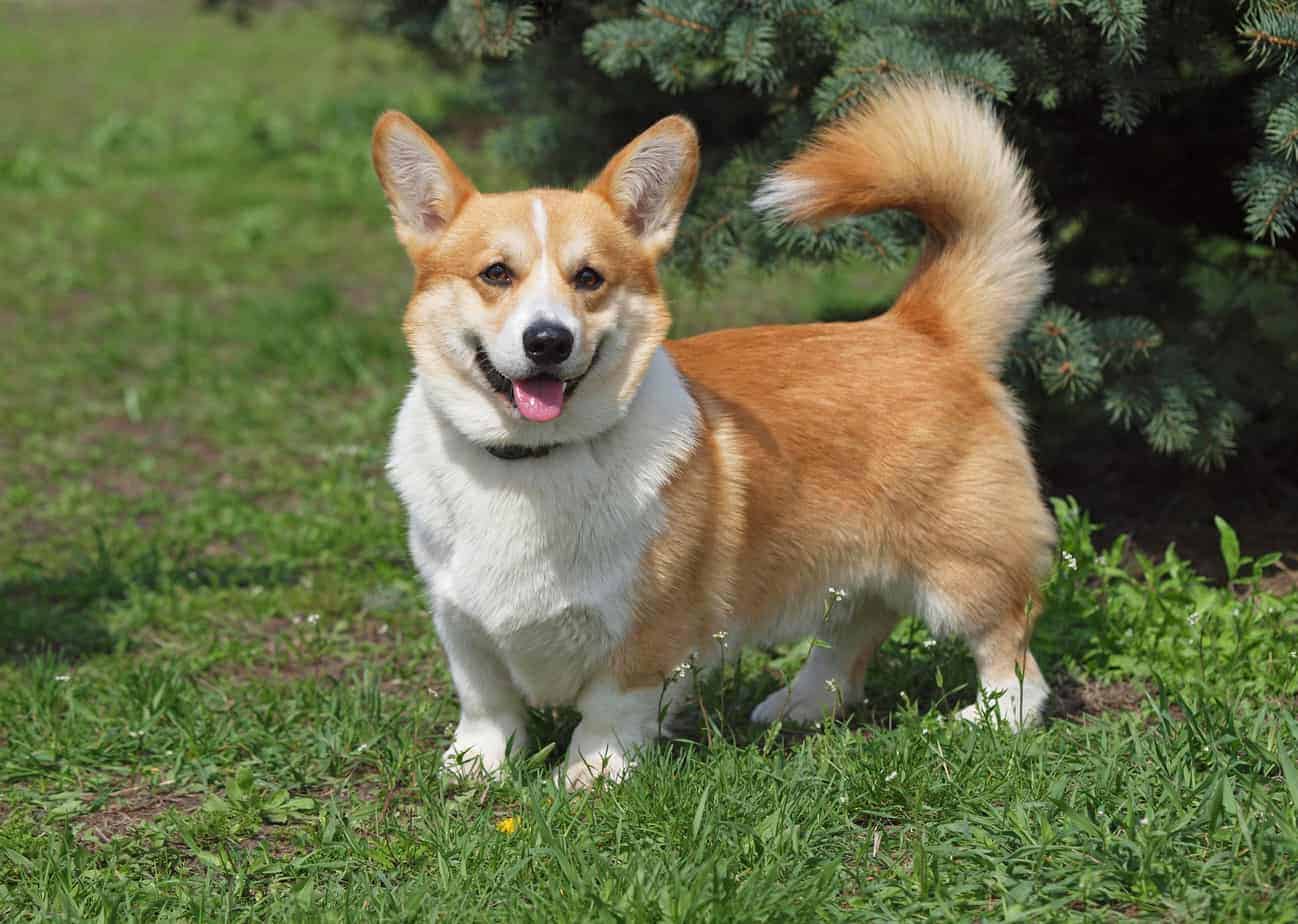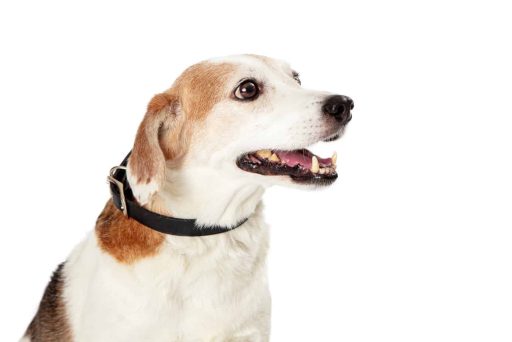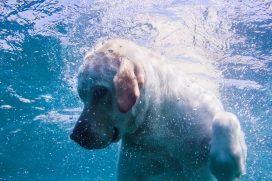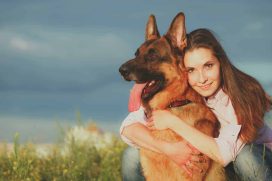The Corgle is a friendly, intelligent and energetic breed that has both Corgi and Beagle heritage. Also called a Beagi, this cute, affectionate crossbreed is growing in popularity as a family dog as they are easy to take care of and will get on with every member of the household, both animal and human!
A Corgle is a designer crossbreed between a purebred Corgi and a purebred Beagle. This eager to please, intelligent and loyal crossbreed is medium in stature and can exhibit the physical characteristics of both the Corgi and the Beagle.
Corgles are usually fairly energetic and most owners will describe them as fun loving and little bit cheeky. To keep them happy they need plenty of exercise and lots of time and attention from their family.
What Is A Corgle?
The Corgle is a crossbreed derived from crossing a Beagle with a Corgi.
The Corgle’s parents are a Beagle and a Corgi. The Corgi parent may be a Pembroke Welsh or a Cardigan Welsh Corgi. The Corgle will often look like it has the head of a Beagle on the body of a Corgi. To understand the Corgle a little better let’s take a look at the parent breeds.
The Beagle is an excellent hunter, bred to hunt in packs. As such the Beagle is typically very easy going and gets along well with other dogs. They are also friendly, loyal, curious, and fun. It is best to keep this breed on a leash as they can tend to wander when following a scent.

The Pembrooke Welsh Corgi is strong, lively, and affectionate. The Cardigan Welsh Corgi is loyal, affectionate, and smart. Both breeds of Corgi were originally bred to herd cattle and sheep. The main difference between these two Corgies is seen in their tails and ears. A Pembroke Welsh Corgi has only a tiny tail and his ears are more rounded. Meanwhile, the tail of a Cardigan Welsh Corgi is long and his ears are more pointed.

Thus, a Corgle can have a long tail or a very short tail. His ears can be erect like a Corgi or flop over like that of a Beagle. His legs and the length of his back can also vary. Some Corgles will look more Beagle and some will be closer in resemblance to a Corgi, others will be a good mix of both.
What Are The Main Characteristics of the Corgle?
Because this is a mixed breed, the breed characteristics can vary quite a bit. The puppies born from mixing a Beagle with a Corgi can have any of the characteristics of either parent or a mixture of both. Some will be very Beagle and some will be very Corgi. So, keep that in mind as we go through the Corgle characteristics.
The Corgle can be anywhere from 10-15 inches tall.
The weight of a Corgle can be anywhere from 20-38 pounds. It is likely to be on the higher side if the Corgi parent is a Cardigan Welsh Corgi. The Cardigan tends to be a bit bigger than the Pembroke.
What Kind of coat does a corgle have?
The Corgle has a short to medium, dense coat that can be single or double layered and can be a variety of colors.
Coat colors can vary from classic Beagle coloring with black, tan, and white or any other hound color. From the Corgi side, a Corgle could be black and tan, sable, red, fawn, brindle, and blue merle (these colors can be with or without white).
The Corgle may have a short Beagle coat or a more medium length Corgi coat and is not overly soft to touch. The coat may be a double (from the Corgi side) or a single coat (from the Beagle side), with the double coat being the most prevalent.
What kind of temperament does a Corgle have?
The Corgle is usually an affectionate, fun, eager-to-please, alert, and energetic. They usually display a good mix of the personality traits from the parents, the Beagle and the Corgi.
Sometimes they can be more like a Corgi. This means they can be stubborn and aloof when it comes to training. They are not always fond of strangers or visitors, and may display hunting or herding instincts. On the flip side, they can be like the Beagle and be more amiable, even tempered, intelligent, mild-mannered and easily distracted by an interesting scent!
Do Corgles make good family dogs?
Corgles do well with families with children. However, some may be more prone to “herd” the children. But it should be fine as long as you teach your children to “yelp” like a dog if the dog nips at their heels. This will make the dog think that he is hurting them, which he will not want to do. Eventually, the dog will just chase them and not try to nip them anymore.
Corgles may not be the best option if you have other small pets. The breed has a strong prey drive and will either try to hunt or herd your smaller pets. Early socialization can help with this, however.
This breed usually gets along just fine with other dogs. In Fact, if your Cogle takes after his Beagle parent more, then he will do particularly well with another canine companion. The Corgle can get lonely if left alone and may become destructive. However, if the breed has another doggie playmate or can be with you the majority of the time he should be alright.
Corgles can be expected to live somewhere between 11 and 15 years, given the Beagle lifespan and the Corgi lifespan.
Can Corgles live in an apartment and how much exercise do they need?
Cogles can be apartment dwellers as long as they get the exercise and attention they need.
However, the breed will do best in a home with a securely fenced yard. They love to run and a fenced yard will provide them with that ability without letting them get lost if they wander off after a scent. It is a good idea to have an actual fence and not an invisible fence. Invisible fences may keep your dog in but it won’t keep anything out.
Are Corgle dogs hard to train?
The Corgle is easy to train. Just like with any dog, if you start training and socialization at a very young age then it will be much easier to train them.
Socialization is very important for all dogs, including the Corgle. Socialization of a Corgle should start with the breeder, and is a lifelong pursuit. The pup should have had positive experiences with all sorts of people, animals, smells, sounds, and environments before you even take him home.
Be sure to socialize your Corgle with people of every race, height, weight, age, style, and just everyone you possibly can. Also, introduce him to an assortment of sizes, ages, coat types, temperaments, and energy levels of other dogs. Introduce him to different animals cows, horses, bunnies, goats, etc. Don’t forget about introducing him to different environments like stores, vets, pavement, sand, gravel, grass, etc. Introducing your dog to these things and making sure he has a positive experience with them will ensure that he is well adjusted.
The Corgle can sometimes be a little stubborn. However, if you persist with patience and positive reinforcement you will come out with a well-trained dog. Switching up the treats you use as a reward as well as using play as a reward are great options for keeping training fun. Play can be a great option since the breed has a high prey drive.
Enrolling your Corgle in a puppy training class is a great idea. You should look for a class that offers basic training as well as plenty of time for socialization. You can continue the fun by going on to new and exciting classes. Perhaps training tricks or getting ready for the Canine Good Citizen test or learning how to do different dog sports.
How Much Exercise Does A Corgle Need?
Corgles come from two very active breeds. The breed needs both mental and physical exercise. They will do well with at least an hour of physical activity a day. This could be walks, playing at the dog park, fetch, or herding the children in the yard! No matter what exercise it is, be sure to bring along some fresh water!
Always be sure to walk you Corgle on a leash attached to a harness. The Beagle side may be prone to wander off after a scent. Plus, if you use a leash instead of a harness that will help prevent disease later. Constant pulling or jerking on a collar can lead to hypothyroidism and back issues.
The Corgle is great at lots of different canine sports. Canine sports are a great way to burn off extra energy. You could try scent and tracking trials, agility, herding, obedience, rally, or urban herding. Training for these things is a great bonding and energy-burning opportunity.
Whats involved in grooming a Corgle?
The Corgle can have a double coat that can shed quite heavily. So grooming is an important part of care. However, the Corgle’s grooming needs can easily be attended to at home without the need of a professional groomer.
1. Brushing A Corgle
A quick brushing 2-3 times a week is all your Corgle will need. However, they can shed quite a lot so feel free to brush them daily if you want to. You can brush your dog with a simple pin brush or a slicker brush. You may also want to use a deshedding tool during heavier shedding seasons.
2. Bathing
You can bath your Corgle whenever he needs it. Be sure to use a shampoo that is safe for pets. In general, you should not need to bath your Corgle very often. You may want to use a blow dryer to dry them after a bath. This will help to get that thick double coat dry faster. Be sure to get your Cogle used to the blow dryer at a young age, make it fun with lots of treats!
3. Dental Care
Dental care is important for all dogs and the Corgle is no different. Bushing your Corgle’s teeth and providing him with appropriate things to chew will help with his dental health.
You will need to use a dog toothpaste, human toothpaste is not a good idea to use on dogs because they cannot spit it out. Doggie toothpaste can be swallowed. Most dog toothpastes recommend that you brush your dog’s teeth at least 2-3 times per week.
In addition to brushing your dog’s teeth, it is important to provide your Corgle with plenty of appropriate things to chew. Choose items that are meat-based and minimally processed.
Good options include freeze-dried rabbit ears, dehydrated lamb ears, bully sticks, and raw meaty bones (never cooked bones!). Dehydrated trachea is particularly good for the Corgle as it is a natural source of glucosamine which will be good for his joints, including those in his spine. Chewing is great for a dog’s mental, physical, and dental health.
4. Nail Trimming
Nail trimming is an important aspect of your Cogle’s grooming regime. Trimming your dog’s nails once a week will help to ensure that the nails are kept short. Long nails can be painful and cause misalignment. Misalignment in the knees, hips, shoulders, and even the spine can be caused by nails that are too long. It is especially important to keep a Corgle’s nails short since they can already prone to back and hip issues.
5. Ear Cleaning
Your Corgle may need occasional ear cleaning. If the Corgle has floppy ears like a Beagle then you might need to clean them more often than if he has erect ears like a Corgi.
Checking your Cogle’s ear often is a really good idea. If you see an excess buildup of wax or you smell something not nice, it is a good indicator that he needs an ear cleaning.
To clean a Corgle’s ears make a solution of half apple cider vinegar and half filtered water. Soak a cotton ball (never a cotton swab) with the solution. Carefully use the cotton ball to clean the ear. Most dogs do not like this, so be sure to make the experience pleasant by offering tasty treats.
Are Corgles Hypoallergenic?
The Corgle can be a very heavy shedder as such it is not the best choice for people with allergies. Be sure to consider all your relatives and current friends when assessing what sort of dog to get. You wouldn’t want to make your best friend or Aunt Sal have an allergic reaction every time they came to visit.
What Health Problems Can A Corgle Have?
Because the Corgle is a mixture of Beagles and Corgis he has the potential to develop any of the health issues that a Beagle or Corgi could get.
From the Beagle side, your Corgle may experience hip dysplasia, luxating patella, hypothyroidism, eye disorders, and epilepsy.
From the Pembroke Welsh Corgi side, a Corgle could experience hip and elbow dysplasia, degenerative myelopathy, back issues, eye issues, heart issues, and von Willibard’s disease.
If the Corgi parent is a Cardigan Welsh Corgi you should keep an eye out for progressive retinal atrophy, degenerative myelopathy, hip dysplasia, and back issues.
It is a good idea to familiarize yourself with these health issues now. This will make it so you can keep an eye out for symptoms and catch any issues early. Better yet, look into the prevention of all these health problems and implement what you learn. When it comes to dog health, prevention is always better than trying to fix a problem after it has happened.
What’s The Best Food For Corgles And How Much Should You Feed Them?
The Corgle can be prone to being overweight so feeding them the right diet is important. Choosing the right diet for your dog will not only help him maintain a healthy weight but also can act as a preventative of disease. So, do your research when choosing a diet for your dog and don’t just take the word of the pet store attendant or your vet.
You can choose from kibble, canned, semi-moist, home-cooked, or raw diets. The main thing you want to look for in a diet is one that is low in carbohydrates and high in meat. Remember dogs, even the adorable Corgle, are carnivores and they should be fed like carnivores for optimal health. Find a food that is rich in meats and has little to no starches.
Be sure to use the same standards when choosing treats for your dog. The best treats have one ingredient, and is either a meat or a vegetable. My dog loves raw carrots as a treat.
As mentioned before providing your Corgle with plenty to chew on is a great way to promote dental health as well as burn some mental and physical energy. Choose chews that are single-ingredient (meat) and minimally processed.
Dehydrated trachea and raw chicken feet are great options because they are high in naturally occurring and bioavailable glucosamine. Your Corgle can use glucosamine from these foods to help support his own joints including his hips and spine.
Be sure to always provide fresh, clean water. Bring water along on your walks too!
Where Can You Get A Corgle And How Much Do They Cost?
You can get you Corgle from a reputable breeder or you may be able to find a rescue Corgle. When you are looking at the initial cost of getting a Corgle you should expect to spend anywhere from $200 to $1000, depending on where you buy him.
When looking for a good breeder, be sure to meet the parents, the breeder, and see where the puppy is raised. If something bothers you about any of these things try a different breeder.
You should ask the breeder about their socialization program and any health issues that the pup might get. If the breeder has nothing but good things to say about the breed and their puppies, they are not telling you the truth. All breeds have some health issue that you need to be aware of and look out for. A quick google search for breeders in your area should come up with lots of results.
On the other hand, you may also want to rescue a Corgle from the shelter or from a rescue group. You may be able to find a Corgle rescue group in your area. However, you might have to ask around at the purebred rescues for Beagles and Corgis. These groups will often also rescue dogs that are mixes of their breed.
The Pembroke Welsh Corgi Club of America has a page where you can see their rescue groups state by state. Simply contact the rescue group in your state and ask about a Beagle Corgi mix.
Note that the dogs in shelters and from rescues are given up for a reason. Some may have existing health problems or behavioral problems. Keep this in mind as you look for a rescue pet. Ask yourself if you are prepared to pour out the time and money needed to take the best care of one of these Corgles, who have already had a rough life.
Summary – The Corgle
When you mix a Beagle with a Corgi you get a Corgle! These dogs are active, affectionate, and loving. They can be 10-15 inches tall and 20-38 pounds. They often have the body of a Corgi with the head of a Beagle.
The Corgle does well with children and other dogs. Though he may have a tendency to herd children. A Corgle is not the best choice for a home with small animals, as the Beagle’s hunting instincts may kick in.
The Corgle can at times be a challenging student. They do well with positive reinforcement training. Since the breed has such a high prey drive it can be helpful to use toys as a reward.
Grooming of the Corgle is quite simple. A quick brushing once a day or as little as twice a week will suffice. The breed does shed so brushing more often may be necessary during shedding seasons. Make sure to keep your Corgle’s nails trimmed.
The Corgle can get any of the health issues that the Beagle or Corgi is prone to. Namely hip dysplasia, eye problems, and back problems. Be sure to look into these health problems and how to prevent them. This will be your best defense against them.
The Corgle can be prone to weight gain so feeding a high-meat, low-carb diet is a must. Be sure to keep treats and chews to the same standard. High meat and low carb. This will ensure the healthiest pet possible. It is a good idea to feed your Corgle foods that are naturally rich in glucosamine to help support his joints and back.
A Corgle can make a great addition to your family. Be sure to socialize them young, train them well, be with them as much as possible, and give them plenty of exercise and they will be a loyal and affectionate companion for you and your family.
Sources
https://www.dogbreedplus.com/dog_breeds/beagi.php
https://www.mydogsname.com/short-sweet-meet-the-corgi-beagle-mix/






